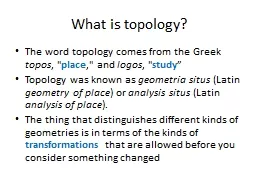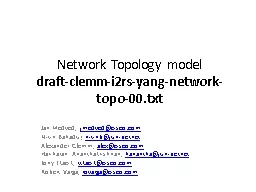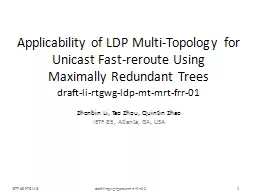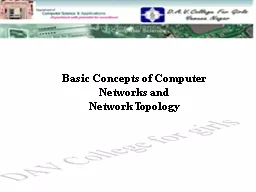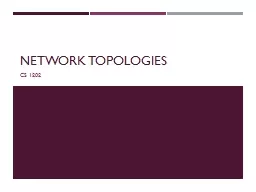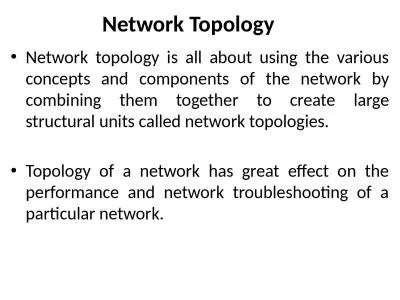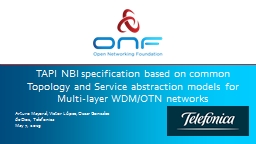PPT-Network Topology
Author : tatyana-admore | Published Date : 2017-01-18
Julian Shun On PowerLaw Relationships of the Internet Topology Faloutsos 1999 Observes that Internet graphs can be described by power laws PX gt x k a x a Lx
Presentation Embed Code
Download Presentation
Download Presentation The PPT/PDF document "Network Topology" is the property of its rightful owner. Permission is granted to download and print the materials on this website for personal, non-commercial use only, and to display it on your personal computer provided you do not modify the materials and that you retain all copyright notices contained in the materials. By downloading content from our website, you accept the terms of this agreement.
Network Topology: Transcript
Download Rules Of Document
"Network Topology"The content belongs to its owner. You may download and print it for personal use, without modification, and keep all copyright notices. By downloading, you agree to these terms.
Related Documents


